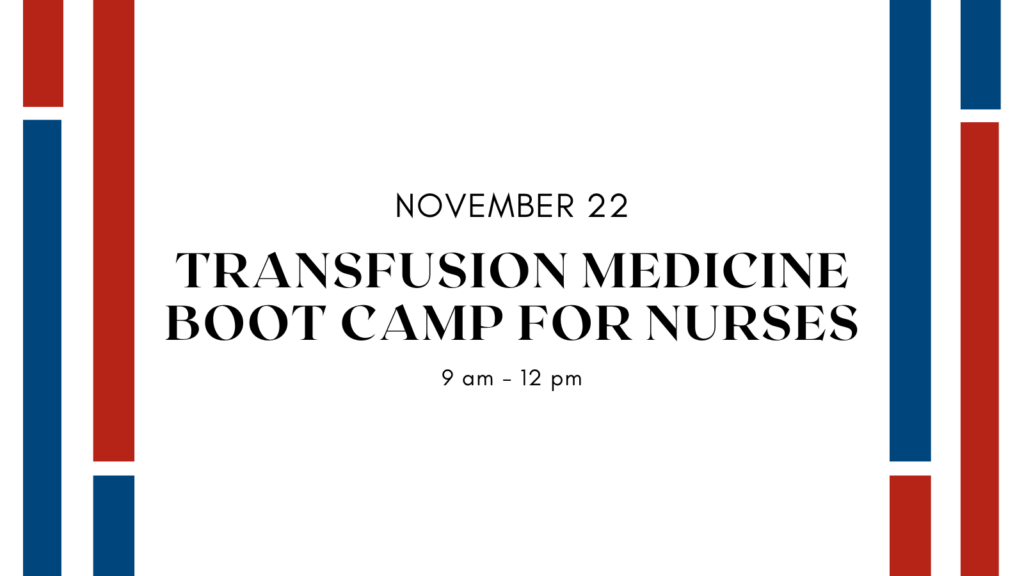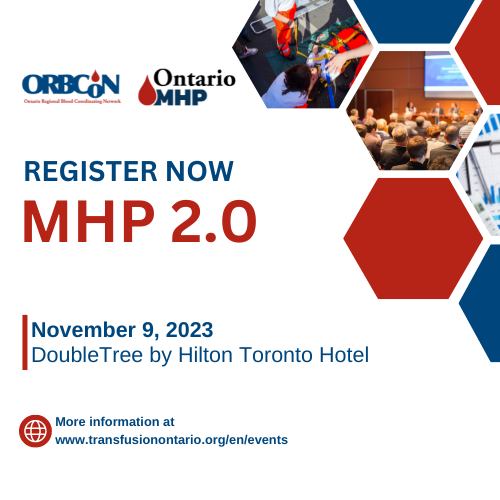International survey on current home transfusion practices
Wen Lu, MD1, Katie Hands, MD2,Andrew Shih MD, FRCPC, DRCPSC, HRM MSc3-5,Simon Stanworth MA, FRCP (Paeds, UK), PhD, FRCPath6-8
- Center for Regenerative Biotherapeutics, Division of Transfusion Medicine, Department of Laboratory Medicine and Pathology
- Scottish National Blood Transfusion Service
- University of British Columbia
- Transfusion Medicine, Vancouver Coastal Health Authority
- British Columbia Provincial Blood Coordinating Office
- National Health Service Blood & Transplant
- Oxford University Hospitals NHS Trust
- University of Oxford
Take home message: We are conducting an international survey on home transfusion programs to determine how many exist and how they function; to help the BEST Collaborative develop practical frameworks for those that wish to develop such programs.
Medical care, including transfusion, predominantly occurs in the inpatient and ambulatory healthcare settings. Hospital at home programs have been shown to have better outcomes with regard to improved quality of life, decreased readmission, and reduced mortality. While such programs typically have not included transfusion support, home transfusion programs have been implemented sporadically around the world.
Due to the COVID-19 pandemic, there has been renewed interest and demand for home transfusion which has led to further implementation of home transfusion programs. Therefore, there is a need to understand the current extent to which home transfusion has become available in different countries. Additionally, there is an opportunity to understand how experienced sites have made home transfusion feasible and safe for patients and potentially share what has been learned.
The Biomedical Excellence for Safer Transfusion (BEST) Collaborative is working on three projects with the overarching aim to characterize the demand for and practice of home transfusion. This international survey is part of this triad of home transfusion projects. The goals of this survey project are as follows:
- Determine how “common” the practice of home transfusion is internationally in terms of a) proportion of transfusion services and b) proportion of countries surveyed that provide transfusion at home.
- Identify the policies, processes, and workflows used by home transfusion programs to minimize the potential risks to patients receiving transfusions at home.
- Collect data to help develop a practical framework for sites wanting to establish new home transfusion programs in the form of a BEST home transfusion guidance.
Hospitals and healthcare institutions around the world will be invited to participate in this survey through international and national transfusion medicine organizations and associations. One of the organizations that the study team has had the honor of collaborating with is the Canadian Society for Transfusion Medicine (CSTM). CSTM has helped make the survey available in French in addition to English and will be distributing the survey when it becomes available at the end of 2023.
We look forward to your participation. If you have any comments or questions about the home transfusion survey study, please contact Wen Lu (wen.lu.md@gmail.com).
Newsboard
Save the Date
2023 TM Boot Camp for Nurses
Upcoming Events
Register
U of T Rounds
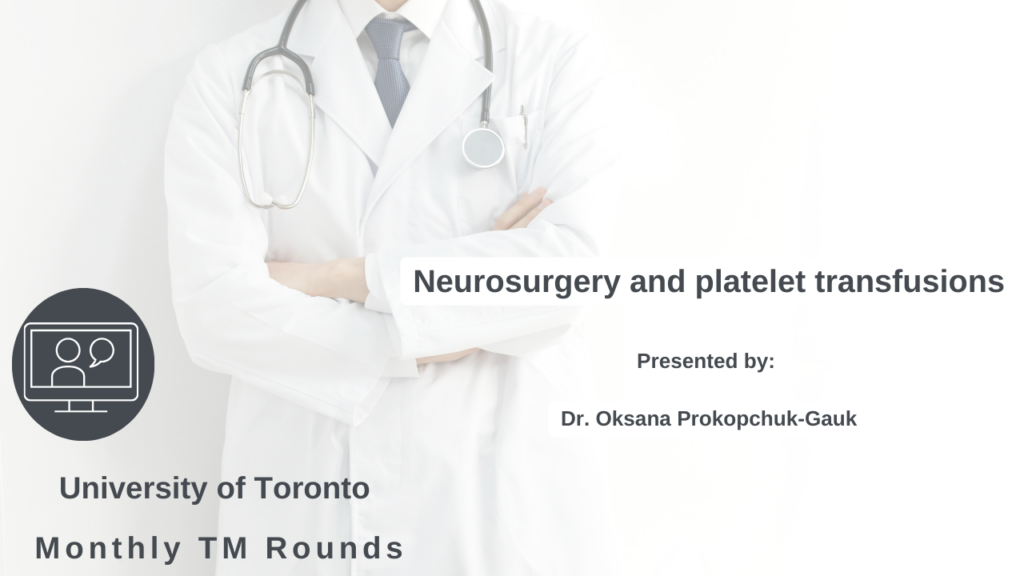
Register
ORBCoN Fall Symposium
Attachment(s)
Amanda VanSpronsen, MSc, BSc (MLS), MLT, PhD
In late 2018, the Canadian Society for Medical Laboratory Science (CSMLS) approached the
University of Alberta (UofA) to explore participation in the Choosing Wisely (CW) initiative. As
most medical laboratory professionals (MLPs) are aware, sometimes healthcare providers order
laboratory tests that aren’t necessary. This wastes time and resources, but can also lead to
patient harm in multiple ways, such as causing or exacerbating anemia. Despite this widespread
issue, little progress had been made until the inception of CW in 2012. CW collaborates with
various professional societies to develop recommendations for commonly mis-ordered medical
tests and procedures. For instance, “Don’t routinely measure Vitamin D in low-risk adults” from
Family Medicine, and “Don’t routinely perform preoperative testing for patients undergoing low
risk surgeries” from Internal Medicine have been published. Choosing Wisely Canada now
boasts partnerships with dozens of societies and lists hundreds of recommendations, and is
continually expanding. Healthcare professionals can access these recommendations and use
them to drive positive changes and improve test ordering appropriateness in their respective
domains.
Unsurprisingly, many of CW recommendations are about laboratory testing, but early on, there
was no medical laboratory society involvement. This prompted the CSMLS and UofA to unite
and spearhead a process to identify how MLPs contribute to the issue of excessive testing. By
the end of 2020, they finalized a list of seven recommendations that all MLPs should be aware
of:
- Don’t collect more blood than what is needed. Use short draw tubes, consider add-on
testing, and reduce or combine duplicate orders. - Don’t proceed with testing or reporting when sample quality or identification is suspect.
- Don’t collect extra blood tubes in anticipation of test orders.
- Don’t support repeat test ordering (re-testing) at a frequency that is not backed by
evidence. - Don’t routinely repeat critical results for most common analytes before reporting.
- Don’t support ordering system mechanisms that contribute to over-testing. Encourage
the development of an evidence-based utilization management program that may
include interventions such as unbundling order sets, reflex testing algorithms, and
decision-support technology. - Don’t allow standing orders for repeat testing without a stop or review date.
The medical laboratory science CWC list contains items that are within the influence and control
of MLPs, and are each backed by evidence
(https://choosingwiselycanada.org/recommendation/medical-laboratory-science/). In addition,
the CSMLS has created a website called Lab Wisely (https://labwisely.ca/), which contains
additional tools and resources, designed to help MLPs initiate change in their workplaces.
Notably, Lab Wisely features an impressive searchable database of all 400+ CWC recommendations that can be filtered by laboratory discipline and stage of testing. Currently, they are working on ‘Lab Wisely 2.0’ to develop even more MLP recommendations for CWC by the end of 2023. Stay tuned for updates!
Addressing the issue of inappropriately ordered laboratory tests is a longstanding challenge, and it will take considerable effort and time to move the dial. It starts with raising awareness among all healthcare professionals and patients, and then working together, both within and across disciplines, to make things better. CWC and the CSMLS are taking collaborative approaches, and there are many ways to get involved. For instance, CWC is currently leading the ‘Using Labs Wisely’ campaign, a national consortium of hospitals that are implementing interventions based on CWC recommendations, collecting and sharing data, and identifying key lessons that can be applied elsewhere. There are currently 104 hospitals participating with the next round of applications opening this year (https://choosingwiselycanada.org/hospitals/using-labs-wisely/). The CSMLS is inviting stories of test utilization improvement projects, and has a collection of case studies on the Lab Wisely website to showcase multiple ways that can MLPs contribute. (https://labwisely.ca/success-stories/) Share yours today! With the efforts leading to Lab Wisely, MLPs now have a powerful toolkit at their disposal. By empowering themselves with knowledge, advocating for change, and participating in initiatives like the ‘Using Labs Wisely’ campaign, professionals can make a tangible impact, improve testing practices, and reduce resource waste, which will benefit both patients and the healthcare system.
Newsboard
Registration Open
ORBCoN Fall Symposium
Bloody Easy 5.1
Available Now
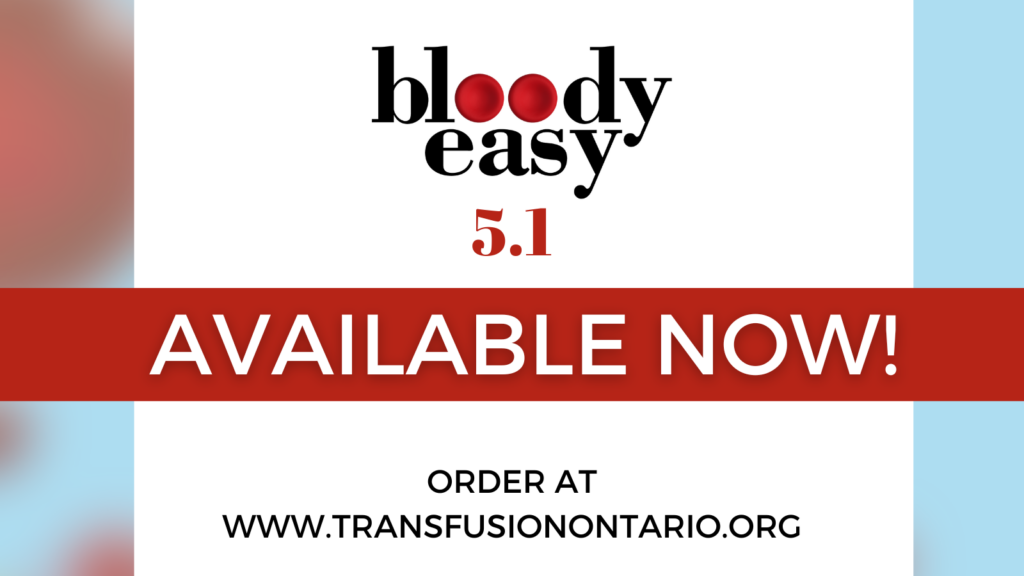
.
Upcoming Events
Register
Transfusionists Talk: Transfusions Made Bloody Easy
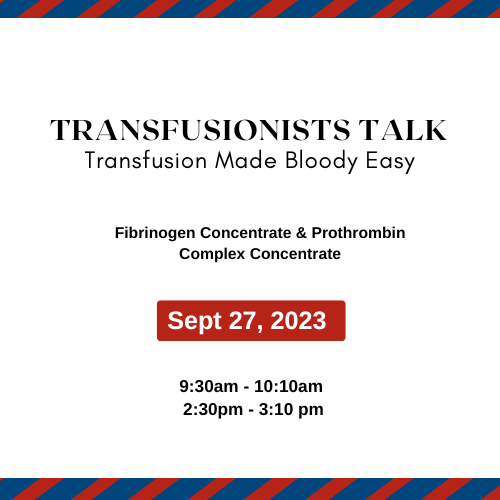
Register
U of T TM Rounds
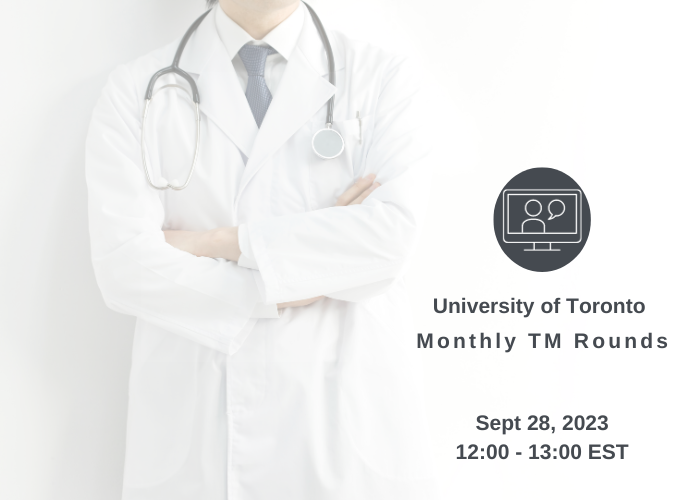
Attachment(s)
Donna Berta, RN, BScN
Access Fibrinogen Concentrate Summary here
Access Prothrombin Complex Concentrate Summary here
Attachment(s)
https://transfusionontario.org/wp-content/uploads/2023/10/Transfusionists-Talk-2023-Sep_FC-PCC_Final_Sept-27_website.pdfKelly Campbell, September 2023
Attachment(s)
https://transfusionontario.org/wp-content/uploads/2023/10/Kelly-Campbell.pdfShelley Anne Solomon
Attachment(s)
https://transfusionontario.org/wp-content/uploads/2023/10/Transfusion-Medicine-Service-support-for-pregnant-patients-with-sickle-cell-anemia-SHELLY-SOLOMON.pdfSandra Bakker, September 2023
Attachment(s)
https://transfusionontario.org/wp-content/uploads/2023/10/Rh-Genotyping_-Lessons-from-the-lab-Sandra-Bakker.pdfNour Alhomsi, September 2023
Attachment(s)
https://transfusionontario.org/wp-content/uploads/2023/10/Rare-Case-of-AIHA-Nour-Alhomsi.pdfDr. Nadine Shehata, September 2023
Attachment(s)
https://transfusionontario.org/wp-content/uploads/2023/10/Hemolytic-Disease-of-the-Fetus-and-Newborn_A-focus-on-prevention-Dr.-Nadine-Shehata-HDFN.pdfDenise Singh, September 2023
Attachment(s)
https://transfusionontario.org/wp-content/uploads/2023/10/DENISE-SINGH-Staffing-Challenges-in-TM-Tipping-the-Scales.pdfGwen Clarke, September 2023
